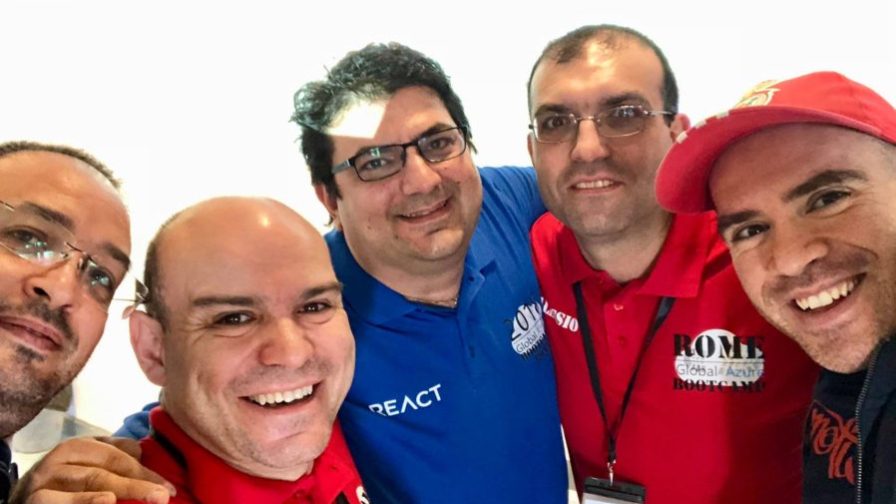
Hello Ivano, at one of the #AperiTech meetups you talked about Serverless Microservices. Why did you choose this topic?
I chose to give this talk because one is a cloud technology, one is a pattern. I believe that the union of these two things has already changed the approach to writing code and developing new projects. It’s something I usually recommend, especially in terms of cost savings. With serverless services in the Cloud, I’m only charged for my actual usage, which results in big savings.
The goal of the talk was to build, together with the participants, a microservices-based serverless infrastructure. Slides can still be interesting, but their best application is still in connection with the talk and a discussion during a meetup.
While we’re on the subject of meetups – in your opinion, is it important for a developer to be a member of a community?
In my opinion, a distinction has to be made between those who regularly attend the community events, and those who only do it occasionally. I think that active participation in the community development is very important, precisely because of its very nature which is related to the desire to discuss and spread the latest news about the technology it deals with. As a result, everything that the community organises, online or offline, is a potential opportunity to learn and network with other developers interested in the same technology.
Being a member of the community is a very important experience because it allows you to deepen your knowledge of the subject.
Thanks so much for sharing your point of view. Now let’s go back to the very beginning. Why did you choose to become a developer in the first place?
I’ve been passionate about computer science from an early age, I chose technical studies which matched my passion. Basically, I’m curious, I’m a thinker, and I have lots of imagination. The IT field is the only working environment where I can use these three characteristics which gives me great professional satisfaction. My work is my passion, that is why I’m an active member of the community .NET Core, where I participate through online contributions and occasionally as a speaker.
My biggest learning source is the internet, with technical articles and articles on specialised blogs. As I’m one of the contributors to Microsoft’s open source projects, it happens that I get access to documents and information before they’re published in the public domain, and I’m always able to keep up-to-date on the latest news.
You’re one of the lucky ones then! What about your background? Could you tell us a bit about yourself?
My name is Ivano Scifoni and I’m a Solution Architect, for both software and infrastructure. I’ve been a contributor to Microsoft’s ASP.NET Core for two years. My introduction to programming is perhaps the most typical one. I made my first small steps with the Commodore 64, and after graduating from ITIS (State Industrial Technical Institute) I started working in Visual Basic. Soon after that came the Internet boom, and I got really into it right away. I started to follow web technologies from their beginnings; I went through Java, PHP, ASP, ASP.NET.
